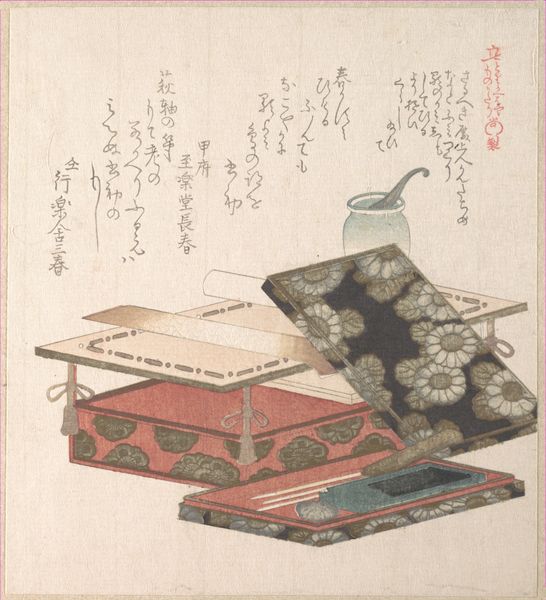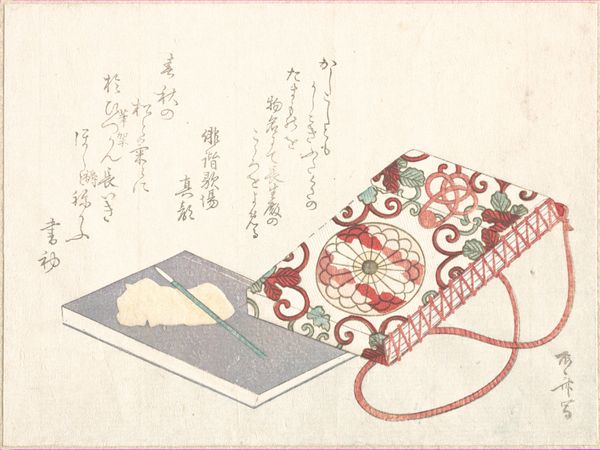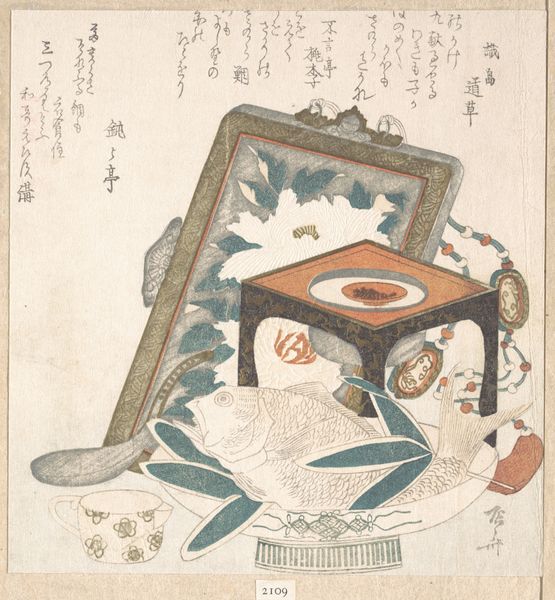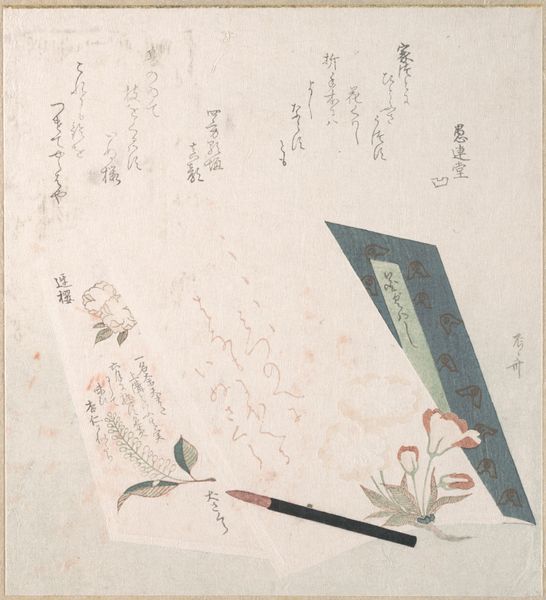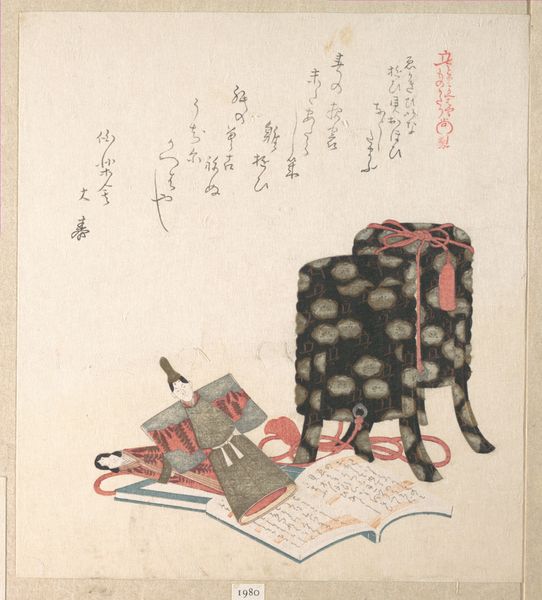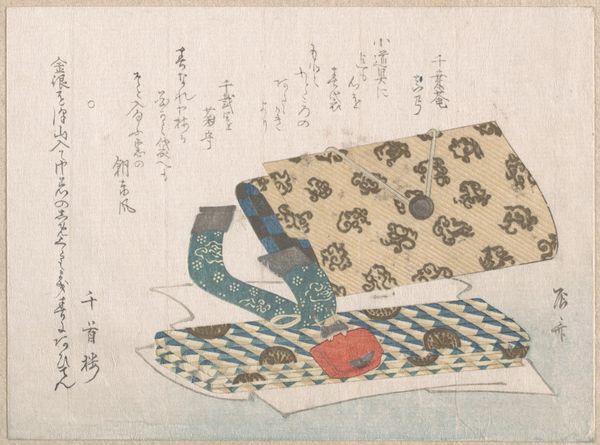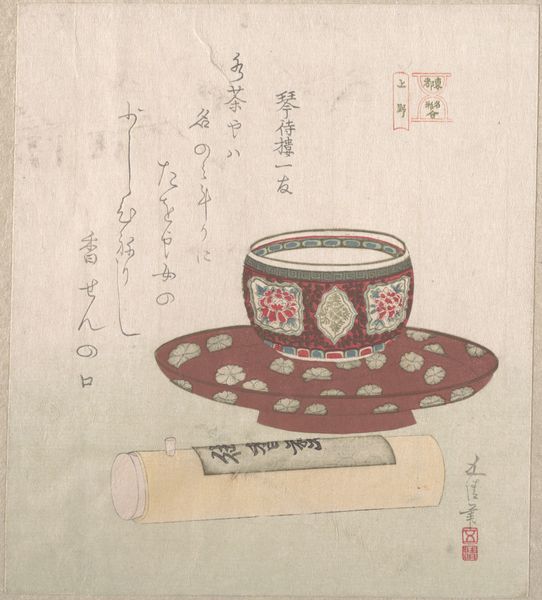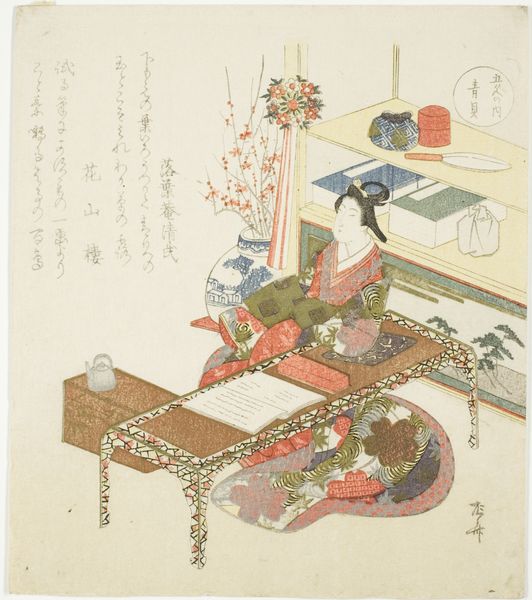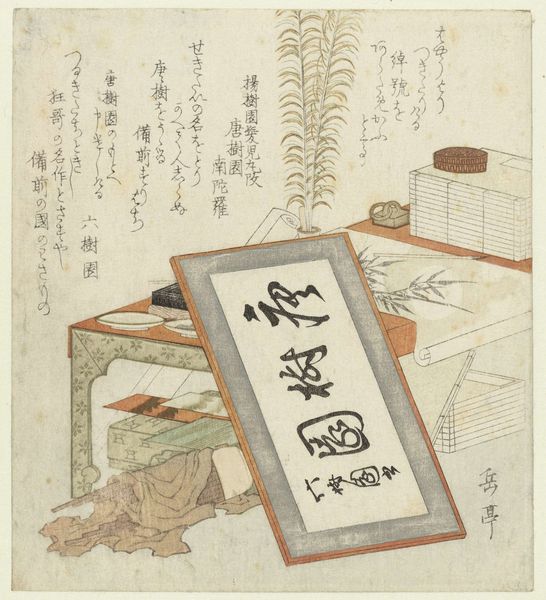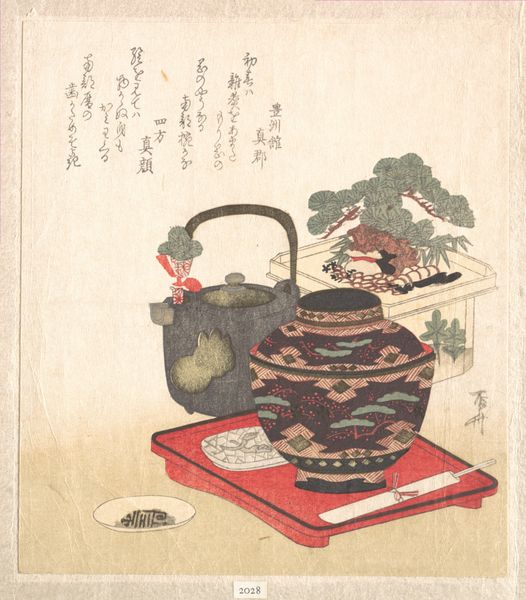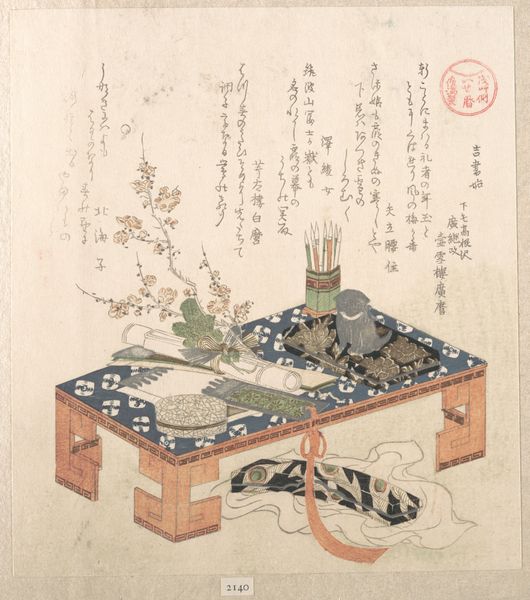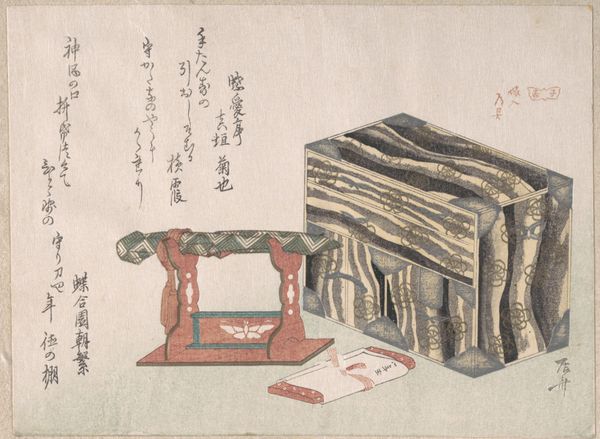
#
aged paper
#
pastel soft colours
# print
#
book
#
asian-art
#
old engraving style
#
retro 'vintage design
#
japan
#
personal sketchbook
#
historical fashion
#
old-timey
#
watercolour bleed
#
watercolour illustration
#
watercolor
Dimensions: 8 5/16 x 7 1/4 in. (21.1 x 18.4 cm)
Copyright: Public Domain
Editor: So, this print is called "Books and Brush-Stand," created in the 19th century by Kubo Shunman. It's currently housed in the Metropolitan Museum of Art. It feels so…intimate, like a little peek into a scholar’s studio. What do you see in this piece? Curator: Well, viewing this through a historical lens, I find it reveals fascinating aspects of Japanese artistic and intellectual life during that era. Prints like this were not just decorative; they actively constructed and reinforced ideas about the literati class. Consider how objects—the brushes, books—are carefully arranged, projecting an image of refined taste and intellectual pursuits. The public role of such images was to communicate prestige. Editor: So it's less about a faithful depiction and more about crafting an ideal? I am intrigued by how those ideal images would be received then. Curator: Precisely. Think about the circulation of these prints. Who was consuming them and how were these images impacting societal expectations of class and intellect? Were they affordable to the average person? Also consider the very act of creating a print. Ukiyo-e prints were popular precisely because the medium allowed wider consumption of images among people of varying incomes. Do you think such an image might democratize, or further stratify, such notions of high culture? Editor: That's a good point! Making it accessible could, paradoxically, reinforce the divide. I guess I always think about the individual artist, but I’m realizing there are much broader societal implications at play here. Curator: Indeed. This piece encourages us to question not just what's depicted, but how the very act of depiction played a part in the social and political landscape of 19th century Japan. Editor: This has made me completely reconsider how to perceive Japanese art from the time period! It sounds so obvious now. Thanks for sharing.
Comments
No comments
Be the first to comment and join the conversation on the ultimate creative platform.
